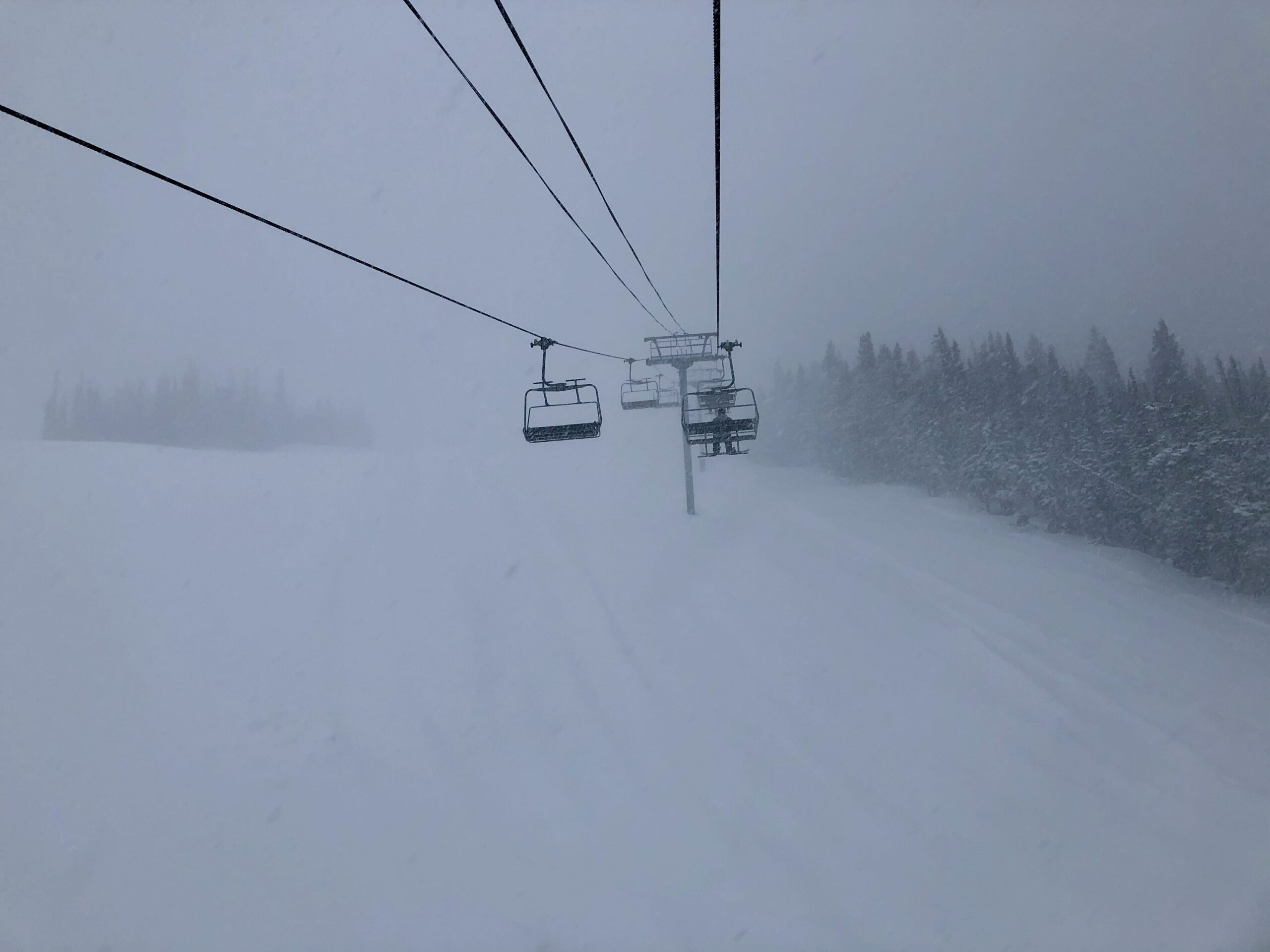By Scott Willoughby
An enlightened sage once suggested that those who choose not to find joy in snow will have much less joy in life. But still the same amount of snow.
Said savant was undoubtedly a skier. And a trout fisher.
I honestly don’t recall which I learned to do first, ski or fish. By a certain age, it had become evident that both were simply part of life, much like the seasons themselves. It took more time to recognize the package as a bonafide lifestyle, however. And snow as the glue that holds it all together.
I was probably 10 years old when our family of five piled into the Ford station wagon that inspired the original Griswold vacation to Wally World and pointed it west, eventually peeling our legs from the sweaty red vinyl at a rustic campground along the banks of the upper Arkansas River in Colorado. In an era when it wasn’t uncommon for kids to wander as far from parental supervision as possible, I soon found myself alone in the Rocky Mountains, contemplating where to cast a Mepp’s rooster tail in the swift, tumbling current that bore zero resemblance to the bass ponds I’d left at home. As luck would have it, the downstream toss eventually swung beneath an undercut bank that doubled as the lair of a tenacious brown trout that hammered the lure with rod-buckling fury. I can still see the strike in my mind, the first brown trout I’d ever caught, in a place I never really expected to catch anything at all.
That thrill was quickly baked into the excitement of a summer snowball fight atop Independence Pass, followed by the marvel of ski slopes that dropped out of the sky and right into the heart of downtown Aspen. I needed more of this. And that included winter.
I’d never skied in Vail before moving to the Eagle River Valley some years later, never even heard of Beaver Creek. But I had wet a line in the Eagle, oblivious to the ravages of heavy metal mining and the eventual Superfund Site designation just upstream of my adopted hometown of Minturn. I was just learning to fly fish, and simply assumed I wasn’t very good at it. Turns out no one is when there aren’t any flies in the river. Or fish.
Although I had much to learn, we were at least blessed with abundant water in those early years, and I quickly realized that the rivers relied upon the same snow we skied all winter long. Powder days at Vail and Beaver Creek started to take on more meaning when I took up whitewater kayaking, doubling down on the second coming of the snow as rideable river runoff.
The river gradually cleaned up. And as I began to comprehend the benefits of flushing flows large enough to scour the riverbed, move rocks and create habitat for aquatic invertebrates, I recognized that fly fishing offered even more mileage out of those powder snow days, evidenced by the blizzard caddis hatches that marched upstream on the Eagle as the whitewater waned.
On a good year, the fish grew plump and robust river flows often remained well into autumn, just about the time the snow dances and sacrificial ski bonfires would offer hope for the return of winter’s bounty. The hardier the winter, it seemed, the healthier the rivers. So we celebrate the snow. In its absence, nature’s calendar falls hopelessly out of sync.
If we’re lucky, like this year, it arrives early and often, along with the cold to keep it around. Early November saw twice the average amount of snow on the ground statewide in Colorado and most river basins are currently at or above average with the solstice still a few weeks away. “The Old Farmer’s Almanac” recommends stocking up on enough hot cocoa to get through “a very long, cold, and snow-filled winter.” I’d recommend adding a few lift tickets to the mix.
I’ll be the first to admit that it’s hard sometimes to root for six months of snow and ice, but it’s a lot easier with a good pair of skis or a snowboard. Already we’ve seen a handful of deep snow days at Vail and Beaver Creek that locals rave as better than any ski day during last year’s drought. They’ve brought exhilaration along with beauty, and perhaps even a dash of grace. Certainly a reason to roar for more.
Sure, there’ll be windshields to scrape and sidewalks to shovel, but the rewards of the season are equally, if not exponentially, ample. The sensation of floating on water crystals is unlike any other on earth, and come spring, the softening snow will bring exuberance anew.
The rivers will rise along with the temperatures, and so too will the trout. We’ll dust off some rust, lay out a few casts, and if the luck holds, maybe relive a moment from our youth. And we can all find joy in that.
Scott Willoughby is a Field Coordinator for TU’s Sportsmen’s Conservation Project. He lives, fishes and skis in Eagle County, Colorado.



